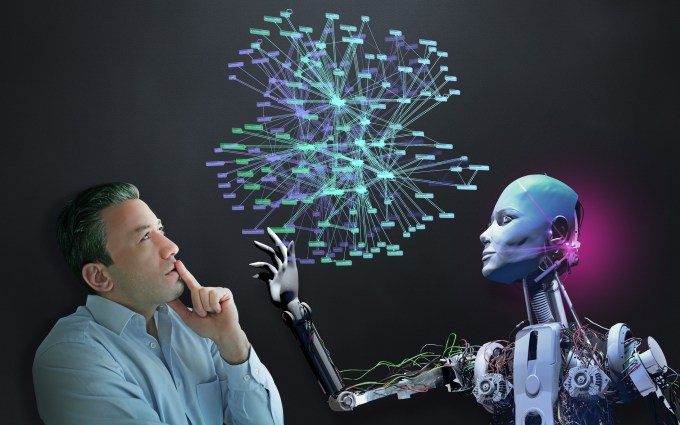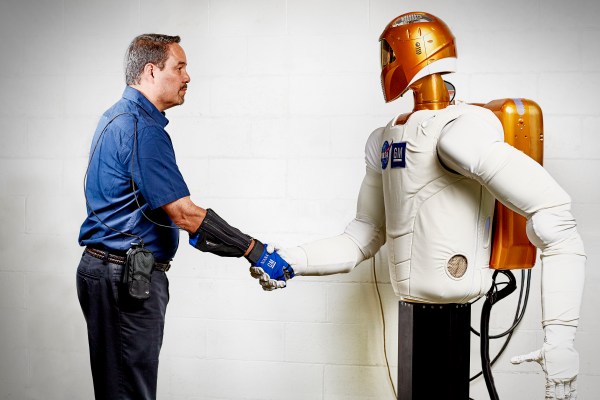With advances in information technology, robotics, and artificial intelligence developing at a rapid rate, workforce dislocations are happening now and are here to stay. As existing trends accelerate and irreversibly change the workforce as we know it, the question to be answered is–what will we do to broadly share the gains and alleviate the challenges?
Cities often lead trend cycles for mass adoption of new technologies. We all know that technological unemployment is as old as technological innovation. However, American cities are entering a period where the maturation of certain technologies will serve as a force multiplier–affecting every sector of the local economy, every worker, and every job.
Automation helps innovation flourish and brings cost savings for businesses, but also displaces jobs. Over the last few decades, more and more elements of the workforce have or are on their way toward being automated.
Recent examples abound from food services to factory floors and more. For instance, Eatsa is a new fast-food restaurant requiring zero human interaction. Customers place orders via tablet and receive their prepared food through one of several glass cubbies set into a wall.
Amazon’s fulfillment warehouses employ Robo-Stow, a six-ton robotic arm that moves large inventory, and crate-moving robots made by Kiva Systems. Since introducing Kiva, the average time for finding something and boxing it for shipping has gone from an hour and a half to 15 minutes. Amazon has also invested heavily in automated drones and artificial intelligence via its new Amazon Robotics division.
These initial examples, while exciting, also reveal that we might be losing more than just jobs to automation. In many cases, businesses will benefit from efficiency while consumers may lose the personal human connection that so many still want. The human side of the equation is critical for a whole range of reasons — with jobs as the most important.

Photo courtesy of Getty Images
In all of this, there are people whose livelihoods are at stake. Over the past 20 years, advanced robotics have undergone rapid technological improvements, affecting both capability and availability. Scholars predict that commercial service robots could perform 7-12% of tasks in food preparation, health care, commercial cleaning, and elder care by 2025.
This means high cost, urbanized areas — which already skew toward accommodating upwardly mobile and wealthy white collar workers — could see the working-class segments of their workforces further undercut. Many of these jobs are highly susceptible to automation and we could see many individuals ushered out of the workforce and out of the city.
Working class and service sector jobs are not the only ones at risk. Advances in artificial intelligence and machine learning have also begun to make automation of “knowledge work” possible.
If advances continue at their present pace, automation tools could perform the work of between 110 and 140 million people globally by 2025, impacting clerical, customer service, sales, education, health care, science and engineering, IT, finance, and legal sectors.
Taken at face value, these technological advances are incredibly meaningful, and they will revolutionize our commercial interactions and expand possibilities like never before.
We don’t yet know what types of new potential jobs automation technologies and artificial intelligence will create that were unimaginable before the technology. But we do know that preparation, through training, education—and ultimately encouraging flexibility leads to success in our cities.

Photo courtesy of Getty Images.
Our NLC Future of Work in Cities report examines the challenges and opportunities that abound as we face this major shift in the workforce. While predicting where and when certain jobs will disappear is difficult, the jobs we will see in 2025 and beyond will look very different from those of today.
The benefits may be great for some, but the challenges will be enormous at a systemic level. Technology exacerbates growing inequality in the workforce, impacting most sectors of the economy in some way.
These potential tensions and upheavals will converge in cities. Not contingent solely on technological feasibility, adoption of automation will also rely upon the costs of the technology, the type of labor replaced, and — critically — social acceptance.
As these technologies look to replace tasks or entire jobs, reactions will range from optimistic acceptance to anger, frustration, and even political upheaval.
The policy choices we make will be critical, as the gains to society could be more equally dispersed or—following recent historical trends—concentrated at the top of the income pyramid.
Negative reactions may originate in a more localized manner among those losing wages and employment. Positive reactions, on the other hand, may be more broadly dispersed among consumers benefiting from lower prices and greater choice.
A wide-ranging discussion needs to commence where we explore policy solutions. These may range from portable benefits to workforce retraining, basic income — and more. These type of expanded social underpinnings—built for tomorrow’s workforce — will be needed to support those working in new ways as well as displaced workers.
At the same time, this expanded focus can create a positive environment for growth. By focusing on these choices we can get ahead of the disruptions to come rather than being reactive to these rapid shifts.
The policy choices we make will be critical, as the gains to society could be more equally dispersed or—following recent historical trends—concentrated at the top of the income pyramid. City leaders, though, are actively seeking to create more inclusive communities with equity as a primary goal. Therefore, it is in cities where we will all help build the future fast before us — and it is incumbent on all of our leaders to truly lead.
